#sabbat mabon
Explore tagged Tumblr posts
Text
0 notes
Text
THE SABBATS








#fyp#fypシ#fypシ゚viral#fypage#fyppage#tumblr fyp#witchcraft#witches#witch#witchcore#witch community#witchy things#sabbats#imbolc#ostara#beltane#litha#lammas#mabon#samhain#yule#wheel of the year#information#helpful#occult#satanist
4K notes
·
View notes
Text
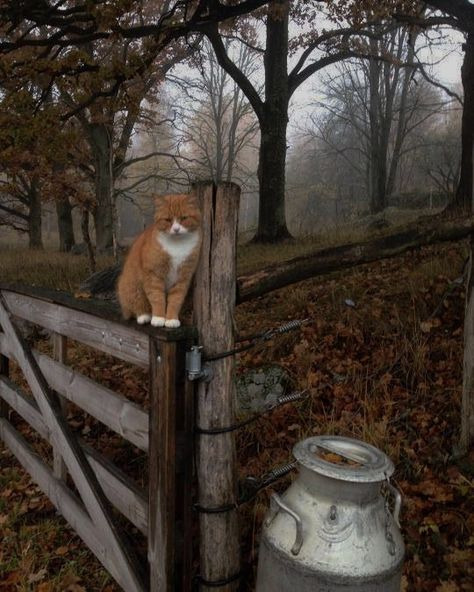
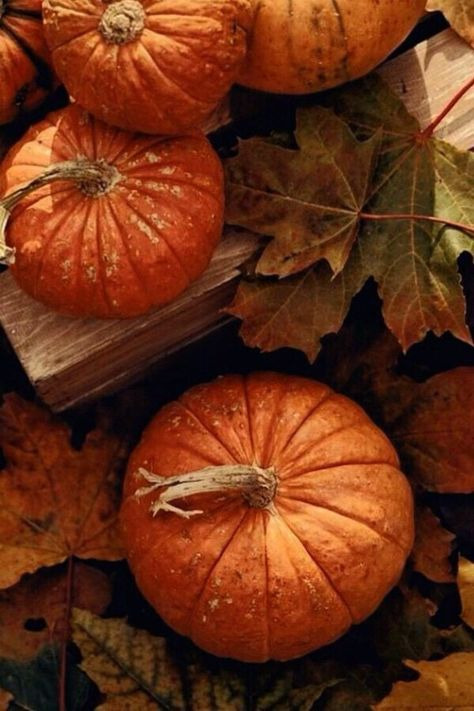
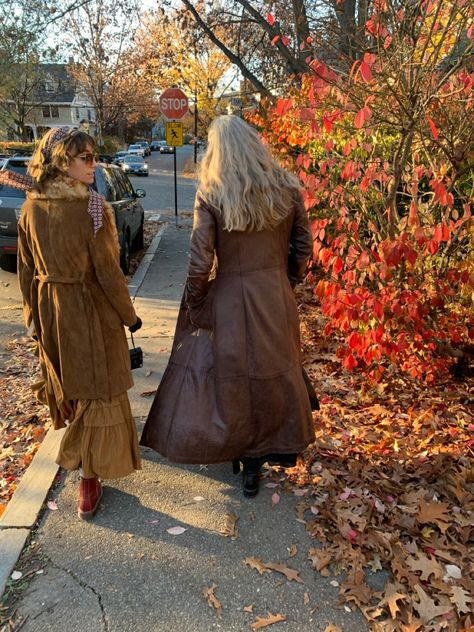



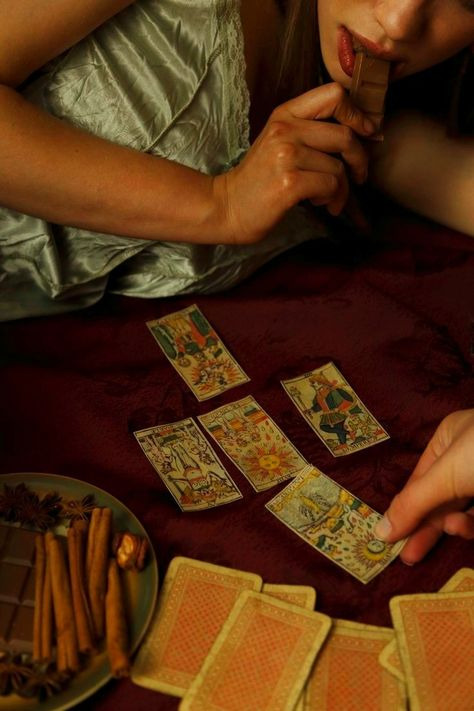
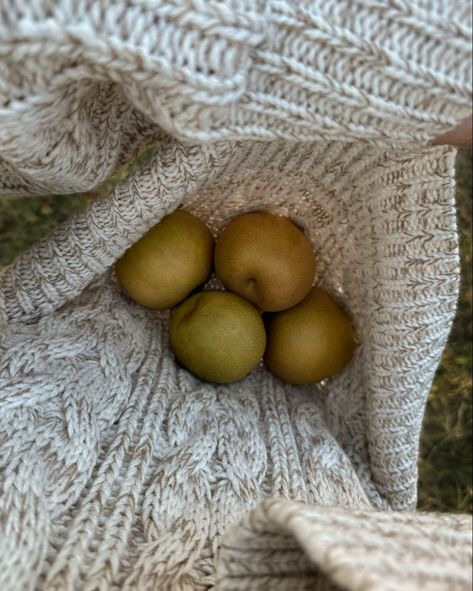

Blessed Mabon witches
#witchy#witchy things#witchyvibes#witches#witch#whimsigoth#whimsigothic#witchythings#whimsical#witchcraft#witch aesthetic#witch community#witchcraft community#witches of tumblr#magick#pagan#wheel of the year#moodboard#green witch#green witchcraft#harvest#harvest season#harvest festival#mabon#autumn#mabon sabbat#mabon altar#autumn equinox#mabon aesthetic#blessed mabon
2K notes
·
View notes
Text

📷quiet.coven
#mabon#blessed mabon#mabon altar#mabon sabbat#mabon 2023#pentacle#witchblr#witches of tumblr#witchcraft#wicca#pagan#witchy#witchy things#magick#wicca altar#witch's altar#pagan altar#witch altar#witches altar#altar setup#altar decor#autumn equinox#fall equinox#fall witch
1K notes
·
View notes
Text
September 2023 witch guide
SEPTEMBER 2024:
September 2023 witch guide
Full moon: September 29th
New moon: September 14th
Sabbats: Mabon September 23rd
September Harvest Moon
Also known as: Autumn moon, falling leaves moon, song moon, leaves turning moon, moon of brown leaves, yellow leaf moon, wine moon & Full corn moon
Element: Earth
Zodiac: Virgon& Libra
Animal spirits: Trooping Faeries
Deities: Brigid, Ceres, Ch'ang-o, Demeter, Freya, Isis & Vesta
Animals: Jackal & snake
Birds: Ibis & sparrow
Trees: Bay, hawthorn, hazel & larch
Herbs/plants: Copal, fennel, rye, skullcap, valerian, wheat & witch hazel
Flowers: Lily & Narcissus
Scents: Bergamot, gardenia, mastic & storax
Stones: Bloodstone, chrysolite, citrine, olivine, peridot & sapphire
Colors: Browns, dark blue, greens & yellows ( Earth tones)
Energy: Balance of light & dark, dietary matters, employment, health, intellectual pursuits, prosperity, psychism, rest, spirituality, success & work environments. Also cleaning & straightening mentally, physically & spiritually.
Technically, the Harvest Moon is the Full Moon closest to the September equinox around September 21st. The Harvest Moon is the only Full Moon name determined by the equinox rather than a month. Most years, it’s in September, but around every three years, it falls in October.
In September, the Full Moon is the Corn Moon from the Native American tribes harvesting their corn. It can also be the Harvest Moon, which corresponds with the Anglo-Saxon name, while Celtic and Old English names are Wine Moon, Song Moon, and Barley Moon.
Mabon
Also known as: Autumn Equinox, Cornucopia, Witch's Thanksgiving & Alban Elved
Season: Fall
Symbols: Acorns, apples, autumn leaves, berries, corn, cornucopia (horn of plenty), dried seeds, gourds, grains, grapes, ivy, pine cones, pomegranates, vines, wheat, white roses & wine
Colors: Blue brown, drk red, deep gold, gold, indigo, lead green, maroon, orange, red, russet, violet & yellow
Oils/incense: Apple, apple blossom, benzoin, black pepper, hay/straw, myrrh, passion flower, patchouli, pine, red poppy & sage
Animals: Dog, goose, hawk, swan, swallow & wolf
Stones: Agate, amethyst, carnelian, lapis lazuli, sapphire, yellow Agate & yellow topaz
Foods: Apples, blackberries, blackberry wine, bread, carrots, cider, corn, cornbread, grapes, heather wine, nuts, onions, pomegranates, potatoes, squash, vegetables, wheat & winw
Herbs/plants: Acorn, benzoin, cedar, corn, cypress, ferns, grains, hazel, hops, ivy, myrrh, oak, pine, sage, sassafras, Salomon's seal, thistle, tobacco & wheat
Flowers: Aster, heather, honeysuckle, marigold, milkweed, mum,passion flower& rose
Goddesses: Danu, Epona, Modron, Morrigan, Muses, Pomona, Persephone, Sophia & Sura
Gods: Esus, Green Man, Hermes, Mabon, Mannanan, Toth & Thor
Issues, Intentions & Powers: Accomplishment, agriculture, balance, goals, gratitude & grounding
Spellworks: Balance, harmony, protection, prosperity, security & self confidence
Related festivals:
• Sukkot- is a Torah-commanded holiday celebrated for seven days, beginning on the 15th day of the month of Tishrei. It is one of the Three Pilgrimage Festivals (Hebrew: שלוש רגלים, shalosh regalim) on which those Israelites who could were commanded to make a pilgrimage to the Temple in Jerusalem. In addition to its harvest roots, the holiday also holds spiritual importance with regard to its abandonment of materialism to focus on nationhood, spirituality, and hospitality, this principle underlying the construction of a temporary, almost nomadic, structure of a sukkah.
• Mid-Autumn festival- also known as the Moon Festival or Mooncake Festival, is a traditional festival celebrated in Chinese culture. Similar holidays are celebrated by other cultures in East & Southeast Asia. It is one of the most important holidays in Chinese culture; its popularity is on par with that of Chinese New Year. The history of the Mid-Autumn Festival dates back over 3,000 years. The festival is held on the 15th day of the 8th month of the Chinese lunisolar lunisolar calendar with a full moon at night, corresponding to mid-September to early October of the Gregorian calendar. On this day, the Chinese believe that the Moon is at its brightest and fullest size, coinciding with harvest time in the middle of Autumn.
• Thanksgiving- This is a secular holiday which is similar to the cell of Mabon; A day to give thanks for the food & blessings of the previous year. The American Thanksgiving is the last Thursday of November while the Canadian Thanksgiving is celebrated in October
• Festival of Dionysus- There were several festivals that honored Dionysus, the God of wine. It was a time of fun, games, feasting & drinking wine.
Activities:
•Scatter offerings in a harvested fields, Offer libations to trees
• Decorate your home and/or altar space for fall
• Bake bread
• Perform a ritual to restore balance and harmony to your life
• Cleanse your home of negative energies
• Pick apples
• Have a dinner or feast with your family and/or friends
• Set intentions for the upcoming year
• Purge what is no longer serving you
•Take a walk in the woods
• Enjoy a pumpkin spice latte
• Donate to your local food bank
• Gather dried herbs, plants, seeds & pods
• Learn something new
• Make wine
• Brew an apple cinnamon simmer pot
• Create an outdoor Mabon altar
•Adorn burial sites with leaves, acorns, & pinecones to honor those who have passed over & visit their graves
Many cultures see the second harvest (after the first harvest Lammas) and equinox as a time for giving thanks. This time of year is when farmers know how well their summer crops did, and how well fed their animals have become. This determines whether you and your family would have enough food for the winter. That is why people used to give thanks around this time, thanks for their crops, and animals, and food.
The name Mabon comes from the Welsh God, who was the son of the Earth Mother Goddess. However, there is evidence that the name was adopted in the 1970s, and the holiday was not originally a Celtic celebration.
Some believe Night and day are of equal legth and the God's energy & strength are nearly gone . The Goddess begins to mourn the loss she knows is coming, but knows he will return when he reborn at Yule.
Sources:
Farmersalmanac .com
Wikipedia
Llewellyn's Complete Book of Correspondences by Sandra Kines
A Witch's Book of Correspondences by Viktorija Briggs
Mabon: Rituals, Recipes & Lore for the Autumn Equinox Llewellyn's Sabbat Essentials
#witchcraft#wheel of the year#sabbat#mabon#Corn moon#Harvest moon#witchblr#wiccablr#paganblr#pagan#Wicca#grimoire#spellbook#book of shadows#witches of tumblr#tumblr witch#moon magic#witch tips#witch guide#traditional witchcraft#witch community#witch society#witchy things#witches#witch friends#greenwitchcrafts#All witches#correspondence#witchyvibes#witchcore
728 notes
·
View notes
Text




happy fall :]
#fall#fall season#fall aesthetic#goblincore#nature#goblin aesthetic#cottagecore#woods#critters#forestcore#mushroom#mushrooms#mushroom aesthetic#autumn#leaves#frog#nature photography#mabon#autumn equinox#mabon sabbat#naturecore#nature finds#nature walk#forest
55 notes
·
View notes
Text
𝐆𝐞𝐭 𝐫𝐞𝐚𝐝𝐲, 𝐌𝐚𝐛𝐨𝐧 𝐢𝐬 𝐨𝐧 𝐢𝐭𝐬 𝐰𝐚𝐲!
Mabon marks the Fall Equinox! Typically observed on September 21 in the Northern Hemisphere, Mabon spans from September 21 to September 29. It is a time of balance, when day and night are equal in length, symbolizing harmony and equilibrium. Many cultures celebrate this period as a time of thanksgiving and reflection, honoring the bountiful harvest and the changing of the seasons. Traditional festivities might include feasts with seasonal foods like apples, pumpkins, and squash, along with activities such as gathering with loved ones, giving thanks, and preparing for the colder months ahead.
People often take this opportunity to connect with nature, perhaps by taking walks in the crisp autumn air, collecting colorful leaves, or setting up altars with symbols of the season. It's also a time for introspection, to consider what has been achieved over the past months and to set intentions for the future.
In modern times, Mabon encourages a moment of pause in our busy lives, reminding us to appreciate the abundance around us, to cultivate gratitude, and to seek balance in our own lives. Whether through quiet reflection, community gatherings, or simply enjoying a warm cup of cider while watching the leaves fall, Mabon offers a beautiful reminder of the cyclical nature of life and the ever-present opportunity for renewal and growth.
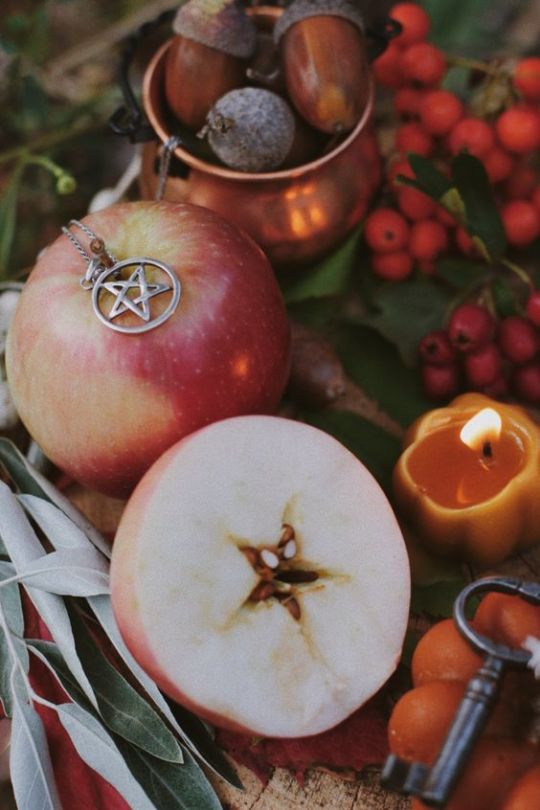
⠂⠄⠄⠂⠁⠁⠂⠄⠄⠂⠁⠁⠂⠄⠄⠂ ⠂⠄⠄⠂☆ Picture from Pinterest
This post will consist of several sections:
Correspondences
Activities
Common Rituals
Broom Closet
and more! Ready to begin?
⠂⠄⠄⠂⠁⠁⠂⠄⠄⠂⠁⠁⠂⠄⠄⠂ ⠂⠄⠄⠂☆
𝓒𝓸𝓻𝓻𝓮��𝓹𝓸𝓷𝓭𝓮𝓷𝓬𝓮𝓼:
⠂⠄⠄⠂⠁⠁⠂⠄⠄⠂⠁⠁⠂⠄⠄⠂ ⠂⠄⠄⠂☆
Animals:
Coyote
Blackbird
Owl
Goose
Stag
Squirrel
Wolf
Symbols:
Cornucopia
Pentagram
Herbs:
Rosemary
Safflower
Thyme
Rue
Rose Hips
Marigold
Saffron
Dried Apple
Oak Moss
Crystals:
Amber
Amethyst
Tiger’s Eye
Citrine
Garnet
Peridot
Yellow Topaz
Ruby
Decor:
Apples
Autumn Leaves
Acorns
Animal Bones
Sunflowers
Pine Cones
Gourds
Balance Scales
Harvest Foods
Pomegranates
Grape Vine
Themes:
Harvest
Gratitude
Balance
Reflection
Shadow Work
⠂⠄⠄⠂⠁⠁⠂⠄⠄⠂⠁⠁⠂⠄⠄⠂ ⠂⠄⠄⠂☆
𝓒𝓸𝓶𝓶𝓸𝓷 𝓡𝓲𝓽𝓾𝓪𝓵𝓼:
⠂⠄⠄⠂⠁⠁⠂⠄⠄⠂⠁⠁⠂⠄⠄⠂ ⠂⠄⠄⠂☆
-Adorn your space with seasonal fruits and vegetables, such as pumpkins.
-Reflect on what the summer season revealed to you about yourself.
-Create an "I let go" list of things you wish to release from the summer.
-Simmer cinnamon to attract abundance.
-Establish your goals for the Fall season, which extends until December 21st.
-Ignite a candle and meditate to catch a glimpse of what the upcoming season holds.
-Tidy up and declutter your home, then pass a cinnamon broom for abundance.
-Indulge in a flavorful spiced tea or coffee. Savor each sip. Take a moment to reflect on your blessings and what you are grateful for.
-The Fall Equinox is on September 22nd at 9:04 pm (EST). Set a reminder and declare, "This season will be my best one yet."
-Trim your hair to release old energy.
-Recharge by visiting a pumpkin patch, farmers market, or spending time outdoors.
-Place an apple beside a coin for good luck and prosperity.
-Create a besom and utilize it to cleanse your home of negative energies.
-Create your own custom Mabon Incense mix.
⠂⠄⠄⠂⠁⠁⠂⠄⠄⠂⠁⠁⠂⠄⠄⠂ ⠂⠄⠄⠂☆
𝓜𝓪𝓫𝓸𝓷 𝓲𝓷 𝓽𝓱𝓮 𝓑𝓻𝓸𝓸𝓶 𝓒𝓵𝓸𝓼𝓮𝓽
⠂⠄⠄⠂⠁⠁⠂⠄⠄⠂⠁⠁⠂⠄⠄⠂ ⠂⠄⠄⠂☆
This list is for those witches who may still be in the closet. These activities can pass as “Autumnal Activities” to others! Here are some subtle yet enchanting ways to celebrate your craft:
Nature Walks: Collect leaves, acorns, and other natural items to use in your spells and crafts. It’s a great way to connect with nature and gather supplies without drawing attention.
Pumpkin Carving: Carve symbols or sigils into your pumpkins. Not only are they festive, but they can also serve as protection or intention-setting.
Candle Making: Create your own candles with herbs and essential oils. You can infuse them with specific intentions and use them for rituals later on.
Baking: Make seasonal treats like apple pie or pumpkin bread. Incorporate herbs and spices that have magical properties, such as cinnamon for prosperity or nutmeg for luck.
Herb Drying: Harvest and dry herbs for your witchy cabinet. Hang bundles of rosemary or lavender in your kitchen to dry; it looks like you're just readying them for cooking.
Gardening: Plant bulbs or prepare your garden for winter. This is a great way to work with the earth and practice your green-thumb magic.
Reading: Dive into books about folklore, mythology, or herbalism. It’s a cozy way to expand your knowledge and connect with ancient traditions. (Kindle has a phone app, if you cannot have physical books)
DIY Crafts: Make wreaths, potpourri, or sachets with found natural items. These can be used for decoration or as part of your magical practice.
Tea Time: Brew different herbal teas. Experiment with blends that have magical properties to set intentions or simply relax.
Moon Watching: Keep track of the moon phases and spend time outside during the full moon. This can be a meditative practice and a way to align with lunar energies.
By incorporating these activities into your routine, you can celebrate your witchy side while blending seamlessly into the autumnal festivities. Happy enchanting!
⠂⠄⠄⠂⠁⠁⠂⠄⠄⠂⠁⠁⠂⠄⠄⠂ ⠂⠄⠄⠂☆
𝓜𝓪𝓫𝓸𝓷 𝓪𝓷𝓭 𝓐𝓹𝓹𝓵𝓮𝓼
⠂⠄⠄⠂⠁⠁⠂⠄⠄⠂⠁⠁⠂⠄⠄⠂ ⠂⠄⠄⠂☆
Apples are a common symbol of Mabon/Autumn Equinox for many pagans, wiccans, and witches. They can be incorporated into many different kinds of spell work for abundance, health, renewal, planting the seed of an idea/intention & knowledge. Apples can be used in magick by cutting them in half horizontally to reveal the star inside. Spell ingredients can then be sprinkled on top. Other ways of using apples is to dry then to decorate your altar or space with. You can gather apples to return to the Earth by burying them to give thanks for the Harvest. Cooking with apples is a perfect way to celebrate Mabon. Whether you make a warm apple pie, a spiced cider, or a savory apple stew, these dishes can be shared with loved ones to honor the season. The act of cooking itself becomes a ritual, infusing each dish with your intentions and gratitude.
Additionally, apples can be used in divination practices. By peeling an apple in a single strip and tossing the peel over your shoulder, the shape it forms when it lands can reveal the initial of a future partner or give you insight into a question you hold in your heart. Scrying with apple seeds is another method; by placing seeds on a hot surface and watching their movement, you can glean messages and guidance.
Incorporating apples into your daily routines during Mabon can also help you remain connected to the cycles of nature. Enjoying a fresh apple as a mindful snack, reflecting on its journey from blossom to fruit, can be a simple yet profound way to express appreciation for the Earth's bounty. Decorating your home with apple-themed items, such as candles, wreaths, or even apple-scented essential oils, can further enhance the seasonal ambiance.
⠂⠄⠄⠂⠁⠁⠂⠄⠄⠂⠁⠁⠂⠄⠄⠂ ⠂⠄⠄⠂☆
𝓣𝓱𝓮 𝓗𝓲𝓼𝓽𝓸𝓻𝔂 𝓸𝓯 𝓜𝓪𝓫𝓸𝓷
⠂⠄⠄⠂⠁⠁⠂⠄⠄⠂⠁⠁⠂⠄⠄⠂ ⠂⠄⠄⠂☆
Mabon, also known as the Autumn Equinox, is a significant festival in the Wheel of the Year, celebrated by many Pagans and Wiccans. The name "Mabon" itself is relatively modern, coined by Aidan Kelly in the 1970s, yet the festival's roots stretch back to ancient times. It marks the second of three harvest festivals, following Lammas and preceding Samhain. Occurring around September 21-23 in the Northern Hemisphere, Mabon represents a time of balance when day and night are of equal length. This event symbolizes the gradual descent into the darker half of the year, as the days grow shorter and the nights longer.
Historically, many cultures have celebrated the equinox with various customs and rituals. In ancient Greece, the festival of Eleusinia honored Demeter, the goddess of the harvest, and her daughter Persephone. The myth of Persephone's descent into the underworld and her eventual return is a powerful allegory for the changing seasons and the cycle of life and death. Similarly, in ancient Rome, the festival of Pomona celebrated the goddess of fruits and orchards, reflecting the importance of the harvest season. In the British Isles, the equinox was a time of thanksgiving and community gatherings, with people coming together to celebrate and share the bounty of the harvest.
Modern Mabon celebrations often involve giving thanks for the earth's abundance, reflecting on themes of balance and gratitude, and preparing for the coming winter months. Rituals may include offerings of fruits, vegetables, and grains, as well as meditative practices to honor the seasonal shift. Many contemporary Pagans and Wiccans also incorporate elements of ancient traditions, such as feasting, storytelling, and connecting with nature. Mabon serves as a reminder of the cyclical nature of life and the importance of living in harmony with the rhythms of the earth.
𝘙𝘦𝘮𝘦𝘮𝘣𝘦𝘳, 𝘵𝘩𝘦 𝘦𝘴𝘴𝘦𝘯𝘤𝘦 𝘰𝘧 𝘔𝘢𝘣𝘰𝘯 𝘪𝘴 𝘣𝘢𝘭𝘢𝘯𝘤𝘦, 𝘨𝘳𝘢𝘵𝘪𝘵𝘶𝘥𝘦, 𝘢𝘯𝘥 𝘱𝘳𝘦𝘱𝘢𝘳𝘢𝘵𝘪𝘰𝘯 𝘧𝘰𝘳 𝘵𝘩𝘦 𝘤𝘰𝘮𝘪𝘯𝘨 𝘥𝘢𝘳𝘬𝘦𝘳 𝘮𝘰𝘯𝘵𝘩𝘴. 𝘉𝘺 𝘦𝘮𝘣𝘳𝘢𝘤𝘪𝘯𝘨 𝘵𝘩𝘦 𝘴𝘺𝘮𝘣𝘰𝘭𝘪𝘴𝘮 𝘢𝘯𝘥 𝘱𝘳𝘢𝘤𝘵𝘪𝘤𝘢𝘭 𝘶𝘴𝘦𝘴 𝘰𝘧 𝘢𝘱𝘱𝘭𝘦𝘴, 𝘺𝘰𝘶 𝘸𝘦𝘢𝘷𝘦 𝘢 𝘥𝘦𝘦𝘱𝘦𝘳 𝘤𝘰𝘯𝘯𝘦𝘤𝘵𝘪𝘰𝘯 𝘵𝘰 𝘵𝘩𝘦𝘴𝘦 𝘢𝘯𝘤𝘪𝘦𝘯𝘵 𝘵𝘳𝘢𝘥𝘪𝘵𝘪𝘰𝘯𝘴 𝘢𝘯𝘥 𝘵𝘩𝘦 𝘯𝘢𝘵𝘶𝘳𝘢𝘭 𝘳𝘩𝘺𝘵𝘩𝘮𝘴 𝘵𝘩𝘢𝘵 𝘴𝘶𝘴𝘵𝘢𝘪𝘯 𝘶𝘴 𝘢𝘭𝘭.
✦ . ⁺ . ✦ . ⁺ . ✦
Thank you for Reading! I absolutely love sharing my knowledge & learnings with others. I try to make posts a few times a week! & they are all organized on my profile.
Until we cross paths once more! Best wishes to all you wonderful witches! Warm regards, Tea.
✦ . ⁺ . ✦ . ⁺ . ✦
For Support on my Blogs:
Facebook: The Black Dahlia Emporium
Tumblr: @ darkforestfae-tea
Pagans & Witches Amino @ darkforestfae
66 notes
·
View notes
Text

All About Mabon
Mabon is the name given to the pagan and Wiccan holiday that is celebrated on the autumn equinox. This year, it falls on September 22nd in the northern hemisphere. Although celebrations have been happening on the autumn equinox for centuries, Mabon as we know it today is a holiday coined and created around the 70s by new-age paganism and Wicca, named after the Welsh God. Although it doesn't have ancient roots, it does take inspiration from other autumn harvest festivals and participants have created beautiful ways to celebrate the neo-pagan holiday.
Just like other autumn equinox festivals, the main theme of Mabon seems to be one of transitioning seasons and giving thanks to the harvest and honoring nature. Many people consider it the pagan version of "Thanksgiving" as both holidays share many of the same symbolism and draw from seasonal items. Cornucopias play a big part in the symbolism of Mabon, representing a bountiful harvest, along with apples as well. Many people gather, feast, and spend time preparing for the long winter ahead as the days now grow shorter. Balance and scales also play a big role in celebrations due to the equinox, making it a great time to reflect on the give and take of life.
There doesn't seem to be one set way to celebrate Mabon due to its recent nature, so participants are encouraged to simply lean on the underlying themes of the holiday and celebrate in the ways that speak to them as they enjoy the universal shift in seasons.
Mabon Associations:
Colors - red, orange, brown, yellow, gold
Food - apples, squash, bread, corn, grains, root vegetables, grapes, nuts, pomegranates, wine, beer, cider, cinnamon
Animals - farm animals
Items - cornucopias, corn stalks, harvest tools, scales, acorns, autumn leaves
Crystals - amber, citrine, jasper, obsidian
Other - balance, change, thankfulness, reflection, letting go
Ways to celebrate:
have a feast
gather with loved ones and give thanks
write a list of everything you're grateful for
have a bonfire
decorate your home with Mabon and Autumn symbolism
harvest food from your garden
visit a farmers market
bake bread or pie
cook autumn themed food
write down goals for the coming season
create a Mabon altar
donate your time or money to those in need
go apple picking
cleanse and ward your home
stock up on food for winter
#mabon#magick#magickal#pagan#holiday#autumn#equinox#wiccan#neopaganism#wheel of the year#grimoire#sabbat#sabbath#magic#magical#witch#witchy#celebration#tradition#thanksgiving#fall#seasons#witchcraft#witchcore#spiritual#september#witchblr#eclectic pagan#paganism#paganblr
36 notes
·
View notes
Text

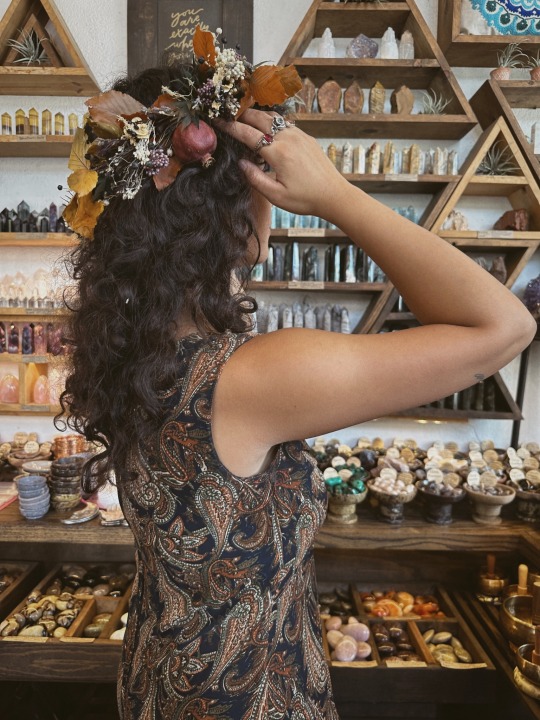
Happy Mabon everyone! Hosted a fall flower crown workshop during our Mabon night market last week. I dried the pomegranate myself 🍂🥀
#witchcraft#witchy things#hedgewitch#eclectic witch#green witch#Persephone#Mabon#hades and Persephone#Kore#persephone devotee#fall equinox#fall flower crown#flower crown#witchy vibes#pagan sabbat#pagan community#pagan witch#hellenic pagan#hellenic pantheon#hellenism
190 notes
·
View notes
Text
Made this fun little infographic about the sabbats for my non-witchy family to join in on the celebrations! Thought I’d share the love😊❤️ Dates are for the Southern Hemisphere! (If people want I can make another one with northern hemisphere dates)
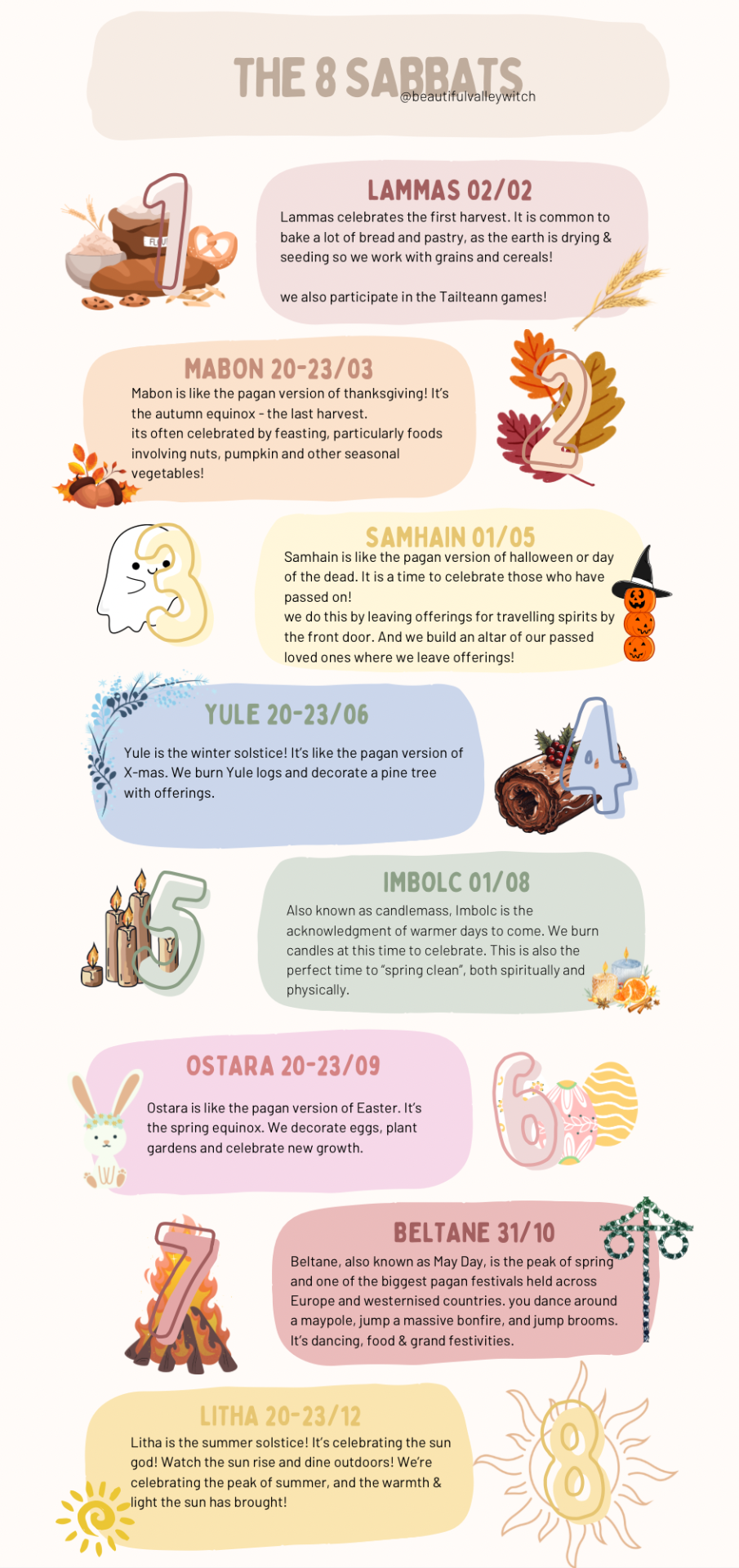
#pagan#occult#wicca#witchcraft#wiccablr#wiccan sabbat#sabbats#witches of tumblr#witchythings#witchblr#witch#lammas#imbolc#mabon#samhain#beltane#yule#litha#ostara#southern hemisphere
106 notes
·
View notes
Text
2025 WITCHES CALENDAR



Here's a handy list of the 2025 dates for the solstices, quarter days, and full and new moons.
Dates and times for all events are calculated for Central Daylight Time, Canada, Northern Hemisphere. Adjust for your location as needed and check the DarkSky Placefinder to see what special events will be visible in your area.
SOLSTICES, HARVESTS, AND QUARTER DAYS
February 1st-2nd - Imbolc / Candlemas / High Winter.
March 19th-23rd - Ostara / Spring Equinox.
April 30th-May 1st - Beltane / May Day / Walpurgisnacht.
June 20th - Litha / Midsummer / Summer Solstice.
August 1st - Lammas / Lughnasadh / Summer Harvest.
September 20th-23rd - Mabon / Autumn Equinox / Fall Harvest.
October 31st - Samhain / Halloween / Final Harvest.
December 21st-January 1st - Yule / Winter Solstice.
FULL MOONS:
January 13th - Wolf Moon ♋
February 12th - Snow Moon ♌
March 14th - Worm Moon ♍ (Lunar Eclipse)
April 12th - Pink Moon ♎
May 12th - Flower Moon ♏
June 11th - Strawberry Moon ♐
July 10th - Thunder Moon (aka Buck Moon) ♑
August 9th - Sturgeon Moon (aka Corn Moon) ♒
September 7th - Harvest Moon ♓ (Lunar Eclipse)
October 6th - Hunter's Moon (aka Blood Moon) ♈
November 5th - Frost Moon (aka Beaver Moon) ♉ (Supermoon)
December 4th - Cold Moon ♊ (Supermoon)
NEW MOONS:
January 29th ♒
February 27th ♓
March 29th ♈
April 27th ♉
May 26th ♊
June 25th ♋
July 24th ♌
August 23rd ♍
September 21st ♍ (seasonal black moon, second new moon in Virgo).
October 21st ♎
November 20th ♏
December 19th ♐
SPECIAL CELESTIAL EVENTS:
March 14th - Worm Moon Total Lunar Eclipse.
March 29th - Solar Eclipse.
September 7th - Harvest Moon Total Lunar Eclipse.
September 21st - Seasonal Black Moon / Solar Eclipse.
November 5th - Frost Moon Supermoon.
December 4th - Cold Moon Supermoon.
#fyp#fypシ#fypシ゚viral#fypage#fyppage#tumblr fyp#witchcraft#witch#witches#witchcore#witch community#witchy#witchblr#beginner witch#lunar witch#2025 calendar#moon phases#full moon#new moon#sabbats#imbolc#ostara#beltane#litha#lammas#mabon#yule#info post#information#helpful
214 notes
·
View notes
Text

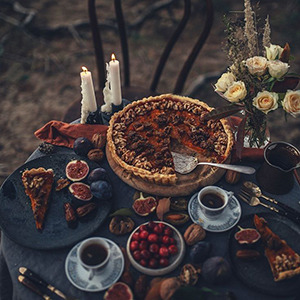


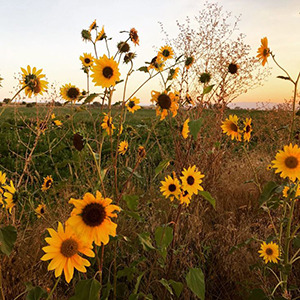

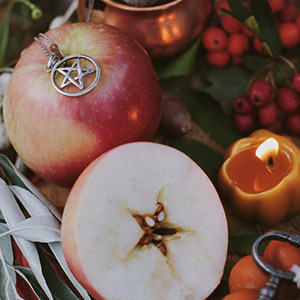


Blessed Mabon
Mabon is a pagan holiday that marks the autumn equinox, and is the second of three harvest festivals in the Wheel of the Year. This festival is about celebrating the abundance of nature and stopping to reflect on balance in our own lives. It marks the transition from summer into fall and is a time to come together with loved ones to feast and give thanks for the blessings of the harvest.
#witchy vibes#witch aesthetic#witchcraft#witchy things#witchblr#mabon#wheel of the year#autumn equinox#sabbats#mabon 2023#witchythings#witchyvibes#wtmoodboard
195 notes
·
View notes
Text
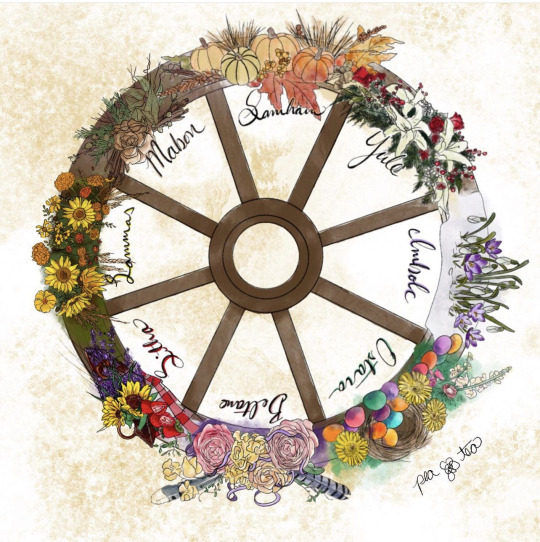
Peaflowertea
#wheel of the year#sabbatic witchcraft#sabbats#sabbat celebration#wiccan sabbat#witches sabbat#mabon#Samhain#Yule#Lammas#lughnasadh#beltane#Ostara#imbolc#litha#witchblr#witches of tumblr#witchcraft#wicca#green witch#baby witch#witch community#green witchcraft#wiccan
874 notes
·
View notes
Text



My beloved altar on this warm Autumn Equinox 2024
#dionysos#dionysus#pagan#pagan altar#apollo#cybele#sabbat#apollon#blessed mabon#mabon altar#mabon#autumn equinox#autumnal equinox#fall equinox#first day of fall#first day of autumn#september#grape harvest#second harvest
48 notes
·
View notes
Text
Alternatives to breadmaking for this lughnasadh:
Boa buns - custard dessert ones, or savory dinner ones. Can be decorated. Bread-ish, but takes less time than bread.
Pasta making - or buying fresh pasta - celebrates the grains
Rice dishes - rice is just as much about abundance as wheat is
Baking with fruits like apples, berries, and late-summer melons
Tortilla making, if that fits with your culture better
Cornbread - homemade, or that 99 cent Jiffy mix.
#witchblr#witchcraft#witchery#witchy#sabbat#lugh#lammas#magick#sabbat celebration#kitchen witch#kitchen witchery#kitchen witchcraft#seasonal witch#eat seasonaly#green witch#lughnasagh#mabon#blessed lammas#blessed lughnasagh
213 notes
·
View notes
Text
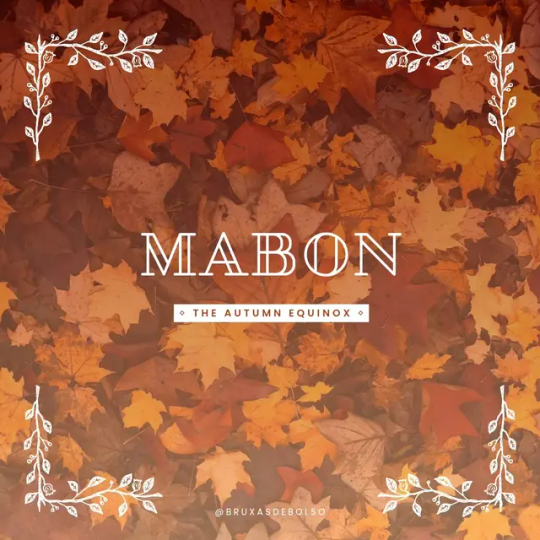
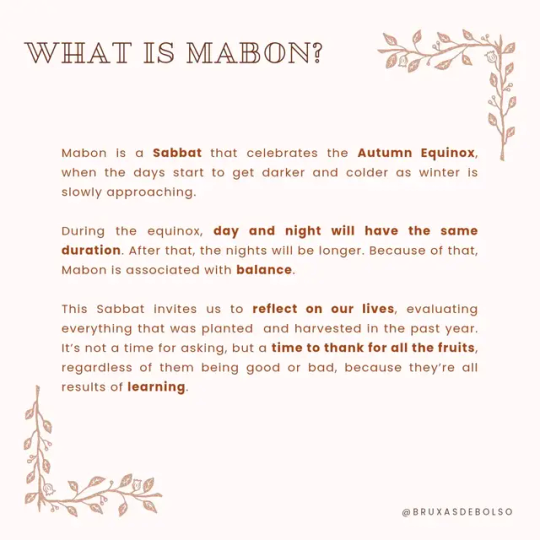

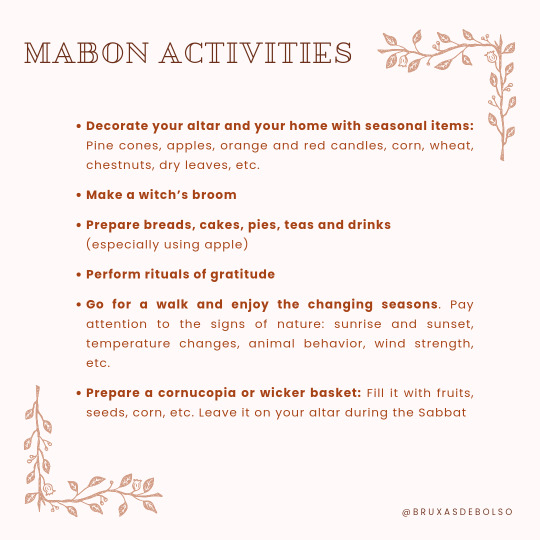
As a south hemisphere witch, I celebrate Mabon in March, my altar is decorated!
HAPPY AUTUMN EQUINOX! HAPPY MABON!
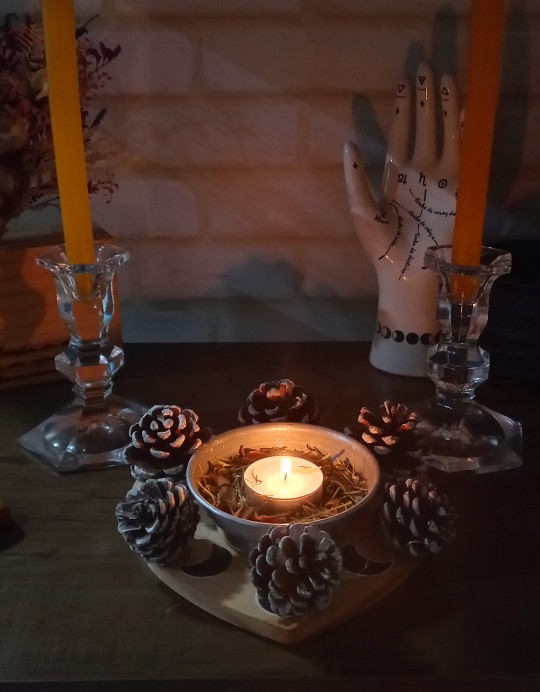
#witch#witchblr#witchcraft#witches#witches of tumblr#beginner witch#studyin witchcraft#tips#witchy tips#sabbat#sabbats#wheel of the year#mabon#autumn#autumn equinox#equinox#fall#balance#pagan#paganism#paganblr
60 notes
·
View notes